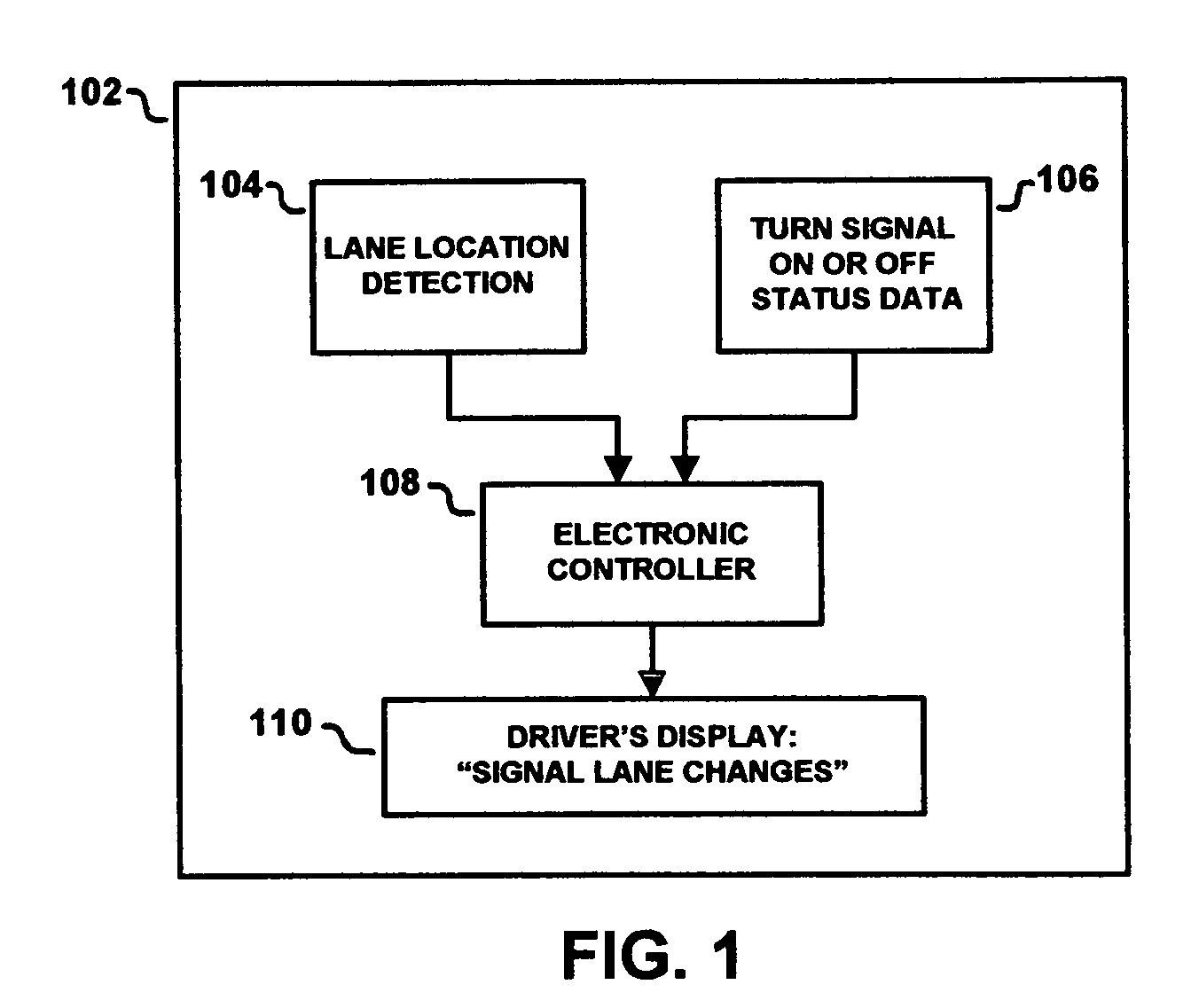Lane change turn signal appropriate use reminder system
a turn signal and appropriate technology, applied in the field of turn signals, can solve the problems of high probability of unintended roadway departure, inadequacies of instant and abrupt warning, and low level of warnings
- Summary
- Abstract
- Description
- Claims
- Application Information
AI Technical Summary
Benefits of technology
Problems solved by technology
Method used
Image
Examples
Embodiment Construction
[0013]It should be noted that lane change turn signal appropriate use determination according to the present invention is independent of whether the vehicle executed a left or a right lane change, but only whether the use of the lane change turn signal was appropriate for the situation. A lane change is defined as a vehicle shift from the original roadway lane that the vehicle is presently in to either a left side or right side adjacent lane. A qualified lane change is a complete lane change from an original lane to an adjacent lane executed by the motor vehicle, and not a situation where a vehicle drifts part way into an adjacent lane, then is corrected by the driver steering the vehicle back into the original lane. When a lane change is completed, then the adjacent lane becomes the new original lane with regards to future lane changes. A driver is one who operates a motor vehicle and is in control of the travel path and lane selection of the motor vehicle as well as one who contro...
PUM
 Login to View More
Login to View More Abstract
Description
Claims
Application Information
 Login to View More
Login to View More - R&D
- Intellectual Property
- Life Sciences
- Materials
- Tech Scout
- Unparalleled Data Quality
- Higher Quality Content
- 60% Fewer Hallucinations
Browse by: Latest US Patents, China's latest patents, Technical Efficacy Thesaurus, Application Domain, Technology Topic, Popular Technical Reports.
© 2025 PatSnap. All rights reserved.Legal|Privacy policy|Modern Slavery Act Transparency Statement|Sitemap|About US| Contact US: help@patsnap.com



